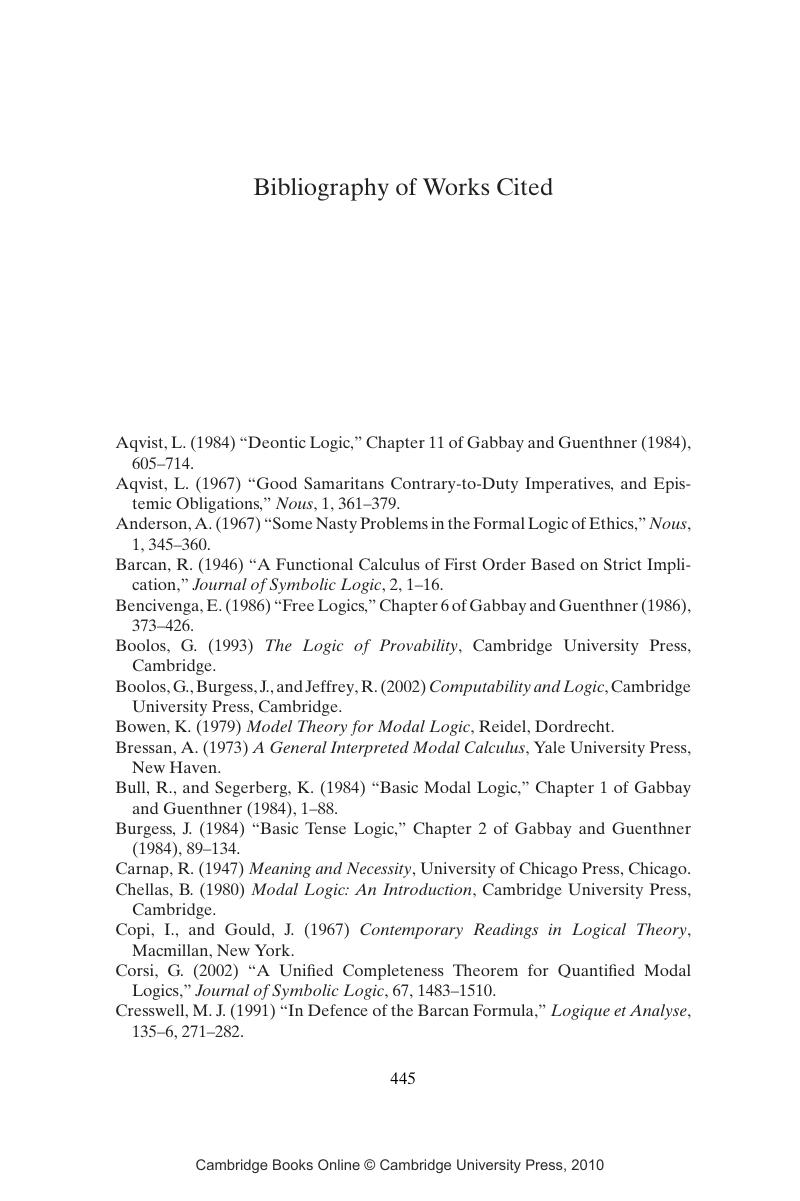Book contents
- Frontmatter
- Contents
- Preface
- Introduction: What Is Modal Logic?
- 1 The System K: A Foundation for Modal Logic
- 2 Extensions of K
- 3 Basic Concepts of Intensional Semantics
- 4 Trees for K
- 5 The Accessibility Relation
- 6 Trees for Extensions of K
- 7 Converting Trees to Proofs
- 8 Adequacy of Propositional Modal Logics
- 9 Completeness Using Canonical Models
- 10 Axioms and Their Corresponding Conditions on R
- 11 Relations between the Modal Logics
- 12 Systems for Quantified Modal Logic
- 13 Semantics for Quantified Modal Logics
- 14 Trees for Quantified Modal Logic
- 15 The Adequacy of Quantified Modal Logics
- 16 Completeness of Quantified Modal Logics Using Trees
- 17 Completeness Using Canonical Models
- 18 Descriptions
- 19 Lambda Abstraction
- Answers to Selected Exercises
- Bibliography of Works Cited
- Index
- References
Bibliography of Works Cited
Published online by Cambridge University Press: 09 January 2010
- Frontmatter
- Contents
- Preface
- Introduction: What Is Modal Logic?
- 1 The System K: A Foundation for Modal Logic
- 2 Extensions of K
- 3 Basic Concepts of Intensional Semantics
- 4 Trees for K
- 5 The Accessibility Relation
- 6 Trees for Extensions of K
- 7 Converting Trees to Proofs
- 8 Adequacy of Propositional Modal Logics
- 9 Completeness Using Canonical Models
- 10 Axioms and Their Corresponding Conditions on R
- 11 Relations between the Modal Logics
- 12 Systems for Quantified Modal Logic
- 13 Semantics for Quantified Modal Logics
- 14 Trees for Quantified Modal Logic
- 15 The Adequacy of Quantified Modal Logics
- 16 Completeness of Quantified Modal Logics Using Trees
- 17 Completeness Using Canonical Models
- 18 Descriptions
- 19 Lambda Abstraction
- Answers to Selected Exercises
- Bibliography of Works Cited
- Index
- References
Summary

- Type
- Chapter
- Information
- Modal Logic for Philosophers , pp. 445 - 448Publisher: Cambridge University PressPrint publication year: 2006



